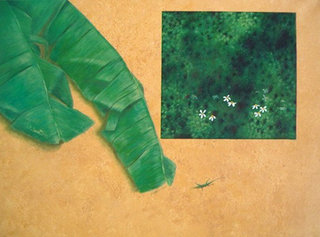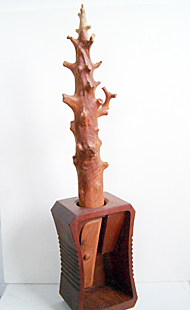Tue 1 Dec 2009
Sin NombreFor this project, I watched a movie called “Sin Nombre” directed by Cary Fukunaga. This is one of the movies mentioned in class that would be appropriate for this project.
I just finished watching this movie and I’m stunned by how desperate the people are trying to escape their tragic lives in Mexico and Honduras – the gang members in Mexico, Casper, Smiley the little boy, and even Martha; in Honduras it was Sayra, her father and her uncle. In Mexico, the gang was so violent and had no regard for human life, but that was the life they chose. Casper/Willy was not as bad as the gang members but was stuck in the gang and couldn’t get out. Smiley joined the gang because he thought his life would be better and he would become somebody important. And Martha was from the good part of town but gets mixed up with a boy from the bad part of town and dies because of her love for Casper. In Honduras, Sayra’s father risked his life and left his family in New Jersey to go back to Honduras and take her and her uncle to the United States. But Sayra jumps off the train, leaving her father and uncle. Sadly her father dies and her uncle gets deported back to Honduras. Finally, Sayra gave up her father and uncle to be with Casper. I find all of this so sad to take in. I think I’m so caught up in the story between Casper and Sayra, which is only two people, but what I should be really sad about is that they represent thousands of Mexicans and Hondurans who are trying to get out of their miserable lives and come to America.
I had so many questions watching this movie. Why did Sayra leave her father and uncle to jump off the train and follow Casper? Did Casper know that his gang members would be waiting for him when he took Sayra to the border, but he did it anyway? Did he think that he could still escape or did he know that he would be killed? Why is this movie called “Sin Nombre”? I looked up the meaning of Sin Nombre and it means “without a name” or “nameless”. I think that this title represents the thousands of people in Mexico and Honduras trying to escape their horrible lives to come to America. But we never hear their personal stories, so they remain nameless people trying to immigrate to America illegally. I think that the director is using this story about two people – Casper and Sayra-to tell the bigger story of the thousands of illegal immigrants who want to come to America. I think this worked because I can relate to the sad story of Casper and Sayra, and that helps me understand why so many people are so desperate to make a better life for themselves in America.
In class, we’ve learned about life in Latin American countries. We have never discussed the terrible poverty that exists in Mexico and Honduras and how the people cope with it and what they will do to escape it. This movie shows me that poverty is horrific and people will do anything and everything to get away from it. I don’t know if I would have had the courage to escape like Casper and Sayra did. This movie makes me want to find a way to help immigrants come to America legally to make a better life for themselves. I’m still crying.








